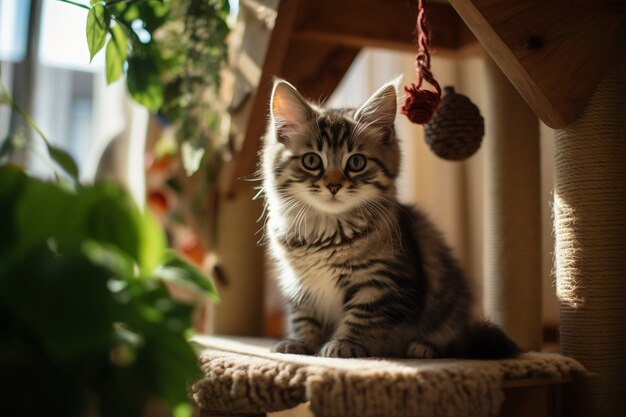The Compassionate Foster: Caring For Cats on Their Journey Home


If you love animals and have space in your home, fostering is the best thing you can do!
This awesome practice allows you to offer a temporary home for animals that need it the most. Cats are especially needy in this department.
Whether you’re a seasoned pro or you’re new to fostering, it’s a good idea to do your research and be as prepared as possible.
These are the top tips and necessary pieces of information to know!
1. Why Foster?

Fostering is one of the best things you can do to boost your mood and feel like you’re really giving back to your community. This gives a cat a temporary place to live and ensures that you can have a fun companion while you watch them open up.
By the end, you’ll feel incredibly rewarded for connecting them with a home and giving them the chance at happiness that they might not have had otherwise. This is also a great way to gain community by meeting others in pet-fostering groups.
2. What Happens During Foster Care?
During fostering, you’ll generally go through a few steps while the cat is in your home! You’ll start by taking the animal in, either by picking it up or having it dropped off by the shelter or organization you’re working with.
For a few days, you’ll want to keep the cat in a room with a closed door that you’ll go in and out of to do their care. Spend at least a combined hour or two with them per day in these first couple of days.
After this, if you and the cat are comfortable, you can let them roam your home. This is a bad idea if you have dogs or other cats that are aggressive, but otherwise, it will give the cat far more confidence and comfort.
Eventually, someone will take an interest in the cat, or the shelter or organization will have a comfortable space for them, and you’ll say your goodbyes! If you grow attached and want to adopt the cat, it’s vital that you let them know as soon as possible so nobody else accidentally puts in an application for the cat!
3. How to Prep Your House
Preparing your home for a foster is easier than it may seem! It’s a good idea to have a home base for the cat. This is just any room with a door, preferably a window, and enough room for them to be comfortable. Many people use spare bedrooms, or home offices, for this area. Make sure your home is safe for the cats and that you can handle any spills or mess they might make.
4. How Can I Afford This?

One of the best things about choosing to foster a pet is that you don’t have to worry about cost or expense in most cases. Most fostering organizations and shelters will cover everything from medical costs to food, toys, and even litter boxes at times. Although you might want to buy treats and scratchers that you can use for multiple fosters, you’re not generally going to spend a ton on these animals.
Related: Exploring the Fascinating Reasons Why Cats Lick Your Face
5. Where to Find Cats to Foster
Look in local animal and cat groups to find an organization or shelter that’s currently looking for people to foster. Reach out and let them know what you’re looking for, what space and time you can offer, and whether you’d be willing to work with kittens. Explaining any previous experience is also an awesome thing to do.
6. Can I Help Them Get Adopted?
Yes! While you foster, you can post pictures and talk to people about the animals you’re caring for. Let people know the adoption status of the felines and talk about their personalities.
You’re a great resource to help them find their forever homes!
Related: Discover The Irresistible Charm Of Scottish Fold Cats: Everything You Need To Know About The Breed!
7. What if it’s a Bad Fit?

Not every match is made in heaven, and animal organizations and shelters know that better than anyone. Although you might do everything you can to create a perfect pairing, it’s good to be honest if you can’t handle it.
Every animal is going to be skittish and scared when they first arrive in a new location, so it’s important to give them time. After the first few days, if you feel like you’re in danger, or you might not be able to offer a safe and quiet space for the animal, you need to notify the organization or shelter you’re working for as soon as possible.
We want all animals to be happy and comfortable, so keep their safety in mind.
This Life Transition Can Be Made Easier
Animals deserve to feel loved and supported, and nobody can do that better than foster homes. Give them a chance to make this change easier, and consider looking into The Pets Magazine for more great tips.
Read Also:








Leave A Comment